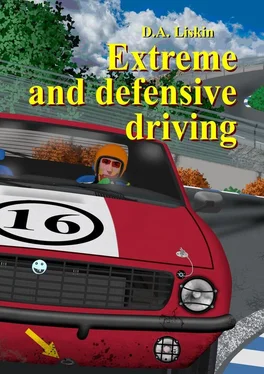Exercise 3. Provoke understeer by turning the steering wheel too much. Take control of car back by slide of the rear axle with handbrake.
Exercise 4 (for rear-wheel drive). Accelerate smoothly at exit of a corner to get sliding of the front wheels. Suppress understeer by causing the rear axle to drift with help of engine power. This may be sharp press on the throttle pedal or spin of engine with subsequent depressing of clutch pedal.
Exercise 5. Place cones on a ground to perform the test described in this chapter. What is maximum speed at which car can pass your test?
Exercise 6. Moving at constant speed, turn the steering wheel to find position of the front wheels, at which radius of trajectory is minimal, but the front axle does not slide.
Exercise 7. Place cones on a ground that simulate a corner. Make long distance behind the cones, ensuring safe exit from the corner. Enter corner at speed at which the front wheels slide and car go out of the corner. With help of previously practiced techniques, extinguish speed at entrance to the corner to overcome slide of the front axle.
Steerability is one of the most important characteristics of car. In many cases behavior of the vehicle can be described by the term of steerability. Steerability – is speed of change the longitudinal direction of the body when the steering wheel is turned while driving. Steerability shows how car will behave while moving after turning the steering wheel.
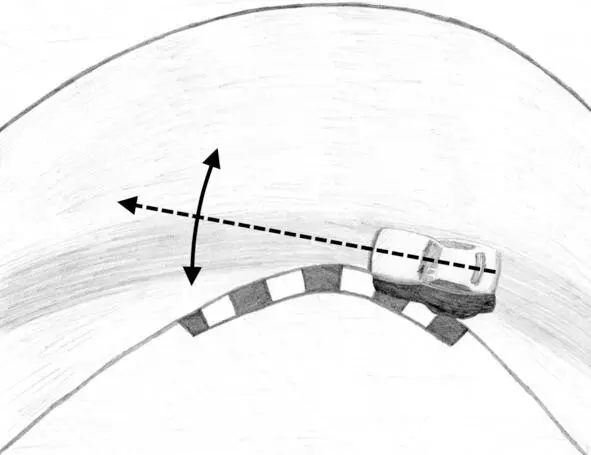
Steerability may be low, neutral, or high. Steerability affects the behavior of car in corner and, as a consequence, the technique of passing corner.
Let us run a couple of tests. We will use two cars. The first is a retro car, a 1970 rear wheel drive sedan. Like many cars of those years, it has a big and heavy engine, which is located in the front. The second is a modern 2011 front wheel drive hatchback with a lighter engine, which is also located under the hood in front of the front axle. Fuel injection on the hatchback engine is carried out by injectors controlled by an electronic engine control unit. Torque of this engine is lower and shifted towards higher rate (compared to the sedan engine), but the engine develops more power at high rate.
The tests will be carried out on a single corner. We will enter the corner at over speed, at which a car does not “build in” the corner a little.
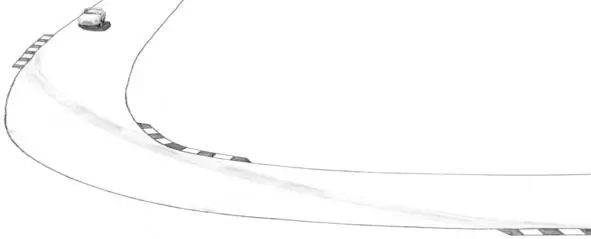
At the entry to the corner depress the throttle pedal and press the clutch pedal, after which we quickly turn the steering wheel all the way to the corner and keep the steering wheel in the full turned position. When speed drops below 10 km/h, press the brake and stop. First, we test the retro car.
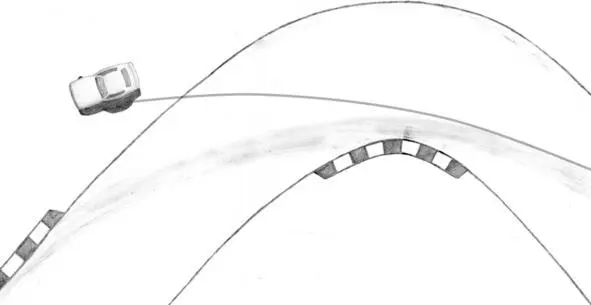
After turning the steering wheel the car did not move along trajectory of desired radius. The front wheels began to slide. You can see the tyre trace of the left front wheel unloaded in the corner. Eventually, the car flew out of the corner. When trajectory is straightened, there is slide of the front axle and car cannot move along trajectory of desired radius, it is said that car shows low steerability or understeer. Car with low steerability when maneuvering is disposed to sliding of the front axle. When driving car with understeer, the body unwillingly turns after turn of the steering wheel.
Now we mount the hatchback and repeat the same experiment.
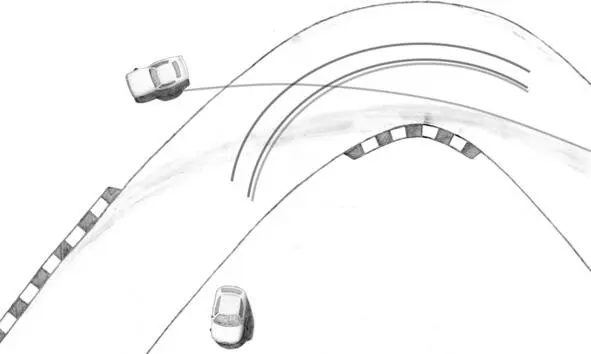
We got trajectory with smaller radius. If you compare the final positions of the bodies, the sedan body turned at angle less than the hatchback body.
In the modern car, in addition to sliding of the front axle, began drift of the rear axle, after which the car lost speed in drift and went inside the corner. This means that the car’s steerability is high. High steerability is accompanied by oversteer and sliding of the rear axle. When you turn the steering wheel the body of car with high steerability begins to turn quickly in the direction of corner, and there is drift of the rear axle.
Let us compare the characteristics of the cars. The old sedan front track is less than the rear track, the hatchback has the conversely. The sedan has engine at the front, like the hatchback, but the base is longer, which means the center of mass is moved away from the rear axle. The automobiles have different body types – sedan and hatchback. Thus, the steerability is affected by width of the front and rear tracks, mass and its spacing. Let us look at some examples.
In race cars prepared for drag racing, the front track is less than the rear, and the heavy engine is at the front, at large distance from the rear axle. All this creates desired very low steerability. Besides, on the front axle of these monsters – are very light wheels with small diameter compared to the rear. The huge wheelbase allows you to accurately adjust trajectory.
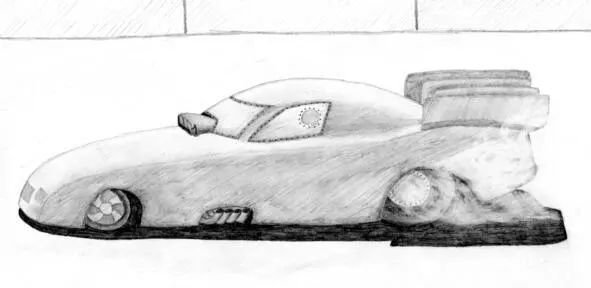
In the rally hatchbacks with front and all wheel drive are popular. The front track is usually wider than the rear. The steerability of the rally cars with these types of drive is often high.
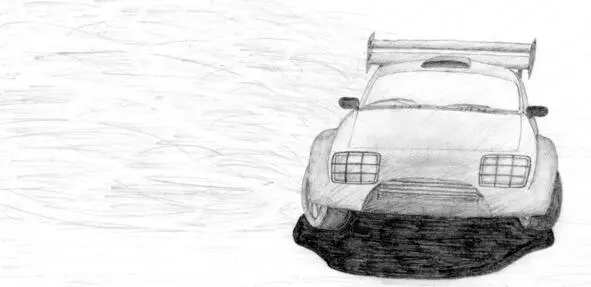
Cars prepared for oval racing – are front engined sedans with large wheelbase and less the front track than the rear. Their steerability – is low.
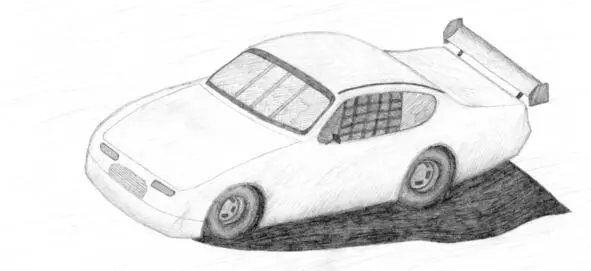
In circuit racing cars with different steerability are used, depending on type of race track, driving style and preferences of racer. Beginning drivers who participate in circuit races usually prefer stable and predictable car behavior and tend to choose low steerability. High steerability allows you to enter corners faster, but driving car with high steerability requires the racer’s driving skills and special car settings.
Let us sum up the results of our tests and reasoning.
• on car with low steerability it is easier to fly out of the turn;
• hatchbacks have higher steerability than sedans;
• if the motor is distanced from the rear axle we get less steerability;
• low steerability is priority for drag and speed racing, such as oval;
• high steerability is well suited for non-speed tracks with lot of corners.
Settings that result in reduce of steerability:
• narrow of the front track and widen of the rear track;
• increase the front clearance and decrease the rear clearance;
• increase deflection rate of the front suspension springs and decrease deflection rate of the rear suspension springs;
• increase the bump and rebound resistances of the front shock absorbers and decrease the bump and rebound resistances of the rear shock absorbers;
Читать дальше
